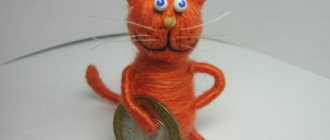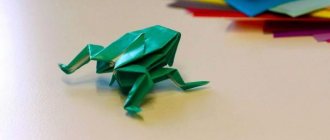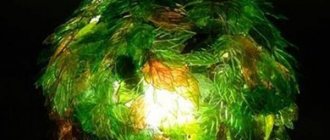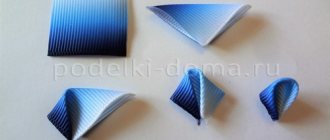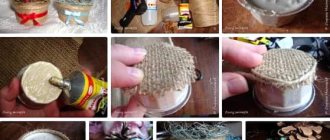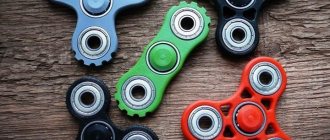How to make a stuffed animal for Maslenitsa 2020 with your own hands: 30 great ideas
Greetings to all!
Maslenitsa week is approaching and, as everyone knows, there will soon be a performance dedicated to seeing off winter. And how can we spend the winter without the main character, and I mean the scarecrow of Maslenitsa. Every year she appears in the winter spaces, she is made from different materials, but in most cases from straw, and then wrapped in a bright painted beautiful fabric, the result is such a big funny girl that looks like a doll or a grandmother.
Usually on this day there is a fair, where, of course, according to tradition, the most important dish is pancakes, so tasty and lacy that you will simply lick your fingers, because it is always more fun in the cold, and even with company. You can also see all kinds of exhibitions with various handicrafts made by yourself.
At the very end of the holiday, it is burned at the stake and at the same time they welcome spring, which means the sun will burn brighter and the birds will sing loudly.
Taxidermy
Few people know who makes stuffed animals. Taxidermy is a method of creating stuffed animals using their skin as the base. It is stretched onto a certain frame, and the cavity inside is filled with filler.
Current taxidermy uses “mannequins” (an internal base made of polyurethane foam with anatomical preservation of the proportions of muscles and all parts of the body).
Taxidermy is mainly used to create museum exhibits, as well as to preserve hunting trophies.
How to make a Maslenitsa scarecrow with your own hands from straw?
Everyone knows that in Rus' such toys were made from simple material like straw; this is the most common type, and in our time too). Using this simple diagram with a description, you can easily decorate the upcoming celebration, which can even take place at school or kindergarten.
This Maslenitsa effigy turns out to be very large, it looks like a girl or a symbol of a female image.
Of course, they burned large huge scarecrows on bonfires, sang songs, but the children could make small creations themselves, also from straw.
They are such beauties).
Often straw was hidden under any activity or unnecessary things, or work was generally done without it.
In my opinion, it looks more like a scarecrow).
Therefore, of course, make from what you have at hand, choose your favorite option.
Moreover, when there is somewhere to look and see all the step-by-step steps of making the work:
The result turns out beautiful and you will agree that such a craft is not difficult to do. Any scarecrow made of straw can be hidden with any openwork or multi-colored material.
Or do you still prefer the usual option, then at least decorate it with a satin ribbon.
Here's another step-by-step instruction from the bast.
It turned out quite modern and very impressive.
Nuances of the profession
Have you ever seen a stuffed animal? You already know the name of the person who created it. Taxidermy is a serious science. Special skills have to be developed over many years, performing painstaking work. Avid hunters using taxidermy can leave a stuffed animal for a long time as proof of their hunting skills. Very often, stuffed animals become parts of various exhibitions and museum exhibits, as we discussed above. They allow people to see the animal up close and get a good look at its appearance, which is difficult to do not only in nature, but also in a zoo.
When starting to create a figure, taxidermists thoroughly study the structure of the animal’s body, which helps them further create a figure without errors.
Today, they no longer stuff the skins of living creatures with shavings, as was practiced in the time of Peter I. They also do not create a frame for the stuffed animal, wrap it in straw, and do not “dress” it in the skin. Such methods of producing stuffed animals are short-lived; gradually their shape can be transformed. In order for the exhibits to become durable and anatomically accurate, sculptural technology is used.
Creating a stuffed animal consists of the following stages:
- mannequin preparation;
- preparing the skin for assembly;
- assemblies;
- drying;
- cosmetic finishing of the product.
When the mannequin is ready, it is sanded and the shapes are adjusted. For sculpture, plastic claws are used, which are cast in the likeness of real ones. Before starting to skin a mannequin, the taxidermist studies the topography - the placement of the skin on a living animal. After all, he must clearly imagine the typical features of folds, surface relief, placement of the figure, and so on.
In this, the master is helped not only by living nature, but also by various drawings, visual aids, and photographs. Many taxidermists argue that it is most important to accurately convey the skin texture of the limbs and the most expressive areas of the head.
Making a Maslenitsa doll for a holiday at school for an exhibition
In one of my articles, I have already shared with you a master class of such a craft from an ordinary plastic bottle and cotton pads, I hope you really liked that doll, if you want to make the same one, follow the link.
Or make such a miracle worker for meeting spring from a tree branch, which will look like a slingshot, approximately 26 cm long.
Or this one, which one did you like best?
Schoolchildren and preschoolers can come up with anything, this is an idea for an exhibition, do you like it?
Decorating crafts
In order for the craft to fit organically into the composition of the garden, it is necessary to decorate it. Acrylic façade paints will help you create different colors of a bird’s plumage and paint its beak and paws.
You can give the bird a decorative look using spray paint, and decorate the eyes with beads
To decorate large round eyes, you can use CDs by gluing them to the head with the mirror side facing out.
Expressive owl eyes can be easily made from discs
You can paint the metal lids of the jars white with black edging and glue the dark bottle lids in the center. Or just draw the eyes and beak.
You can do without additional details by simply drawing the eyes and beak
An important attribute when creating the image of a wise bird is a professor’s hat, which is easy to make from a bottle and a piece of plywood. To do this, cut off the top and bottom of the bottle and glue plywood to the resulting cylinder. The cap is covered with black façade paint and secured to the owl’s head with glue.
A professor's cap is made from a bottle and a piece of plywood
Even disposable plastic spoons in skillful hands become fluffy plumage, giving the owl's figure a more voluminous appearance.
If desired, you can give the owl more volume by making plumage from plastic spoons
A small souvenir made of fabric and thread
I suggest all craftswomen do the following: take ordinary fabric and threads and build a doll that will symbolize Maslenitsa. Often, such dolls were made and they were a kind of amulets for children.
Don't forget to tie a scarf on your head, it will look so cute.
As you can see, satin ribbons are also used for garters.
But even without them you can make a stunning masterpiece.
Yes, not one yet, look.
Such dolls will, of course, become a decoration for the holiday, and the main thing is that you can also make the most important symbol of this celebration, bake real pancakes or knit or sew from felt))).
So, choose any model and create, and then share your feedback and suggestions.
Well, the easiest and most uncomplicated option is to build a product from threads.
Or use this video tip.
With that, I say goodbye to you, I'll see you here soon. Patience and great success at work and everywhere! Bye bye!
The final stage of work
The final stage of the work is decorating the mannequin with skin. He is extremely responsible and extremely important, since the result of all work depends on how lively and correctly the skin “sits” on the mannequin. Many studios have their own suppliers of skins, who bring them from slaughterhouses or markets.
Every taxidermist should know that the skin of a living animal never lies tightly. She fits her body loosely. At the same time, in some places it lies in folds or sags, and in others it is closely adjacent to the tendons and muscles, clearly outlining the plexuses of blood vessels, joints and the entire subcutaneous relief.
How to make a stuffed animal for Maslenitsa - ideas and methods for making a stuffed animal with your own hands
Good afternoon everyone!! The final month of winter is ahead - February, which means that the cheerful Maslenitsa holiday is just around the corner. I personally always look forward to this event, because for me it’s another reason to have a great time with my family, and spending Maslenitsa week is always associated with warmth, bright sunshine and the arrival of spring.
During the celebration of Maslenitsa, that is, a whole week, it is customary to bake and treat everyone to delicious pancakes, as well as organize various gatherings with fun games and competitions. Well, according to a special tradition, on the first day of this week, a scarecrow is made and placed, and at the end of the holiday, on Forgiveness Sunday, it is burned at the stake.
Of course, it’s quite difficult to make such a big, cheerful girl on your own, but making small dolls is quite possible. Moreover, they are very relevant at the fair, which is always held on this holiday. Such crafts act as real amulets, and they are also performed for various competitions and keep children occupied, introducing them to ancient traditions. Today we will look at how you can make such a souvenir with your own hands at home.
In general, do you know, or have you ever thought about why it is customary to burn an effigy of Maslenitsa at the stake?!
It turns out that together with the burned effigy, people get rid of all troubles and misfortunes, and the ashes are scattered across the fields so that the new harvest will be good, and vitality will be replenished and give excellent results in any activity.
How to create a proper and aesthetic scarecrow
They say that the birds have become wiser and are no longer afraid of stuffed animals. The ancient people believed that the scarecrow was made not only to scare people away. It served to protect the fruits and the entire house. Some peoples worshiped the scarecrow. For them, it was a deity with mystical powers that gave health and helped garden crops to germinate faster.
At first glance, the idea is crazy, but you can check it. Make your own stuffed animal and believe that it can hear your thoughts. Also use decorations that symbolize your requests. It could be a floral wreath symbolizing beauty, or a fruit rim symbolizing fertility.
Make two stuffed animals and attract love into your home. All ideas are just your fantasies and inventions. Whatever one may say, magical power is not able to protect the harvest from feathered cunning creatures.
If you decide to install a structure following its intended purpose, then you need to know what birds are afraid of. Try to make all the details that can help and protect the harvest. What are birds afraid of?
- Bright blue color.
- They act wary if they hear loud noises.
- They fly away at the sight of moving objects.
- They freeze at the shiny elements.
The blue palette scares the birds. The color is too bright for them, because you don’t see it very often in nature. When choosing an outfit for a scarecrow, avoid light and pastel colors and choose something aggressively blue.
Most people bring old things to their dacha. A garden dweller must constantly make loud noises. Tie rustling details or bells to your clothes. Believe me, even with a small gust of wind the elements will ring frighteningly.
Using CDs and New Year's rain, add sparkle to the monster. In sunny weather, the details will reveal themselves and the birds will fly away. In our article you can look at a photo of a scarecrow in the garden and choose one of the ideas.
How to make a scarecrow for Maslenitsa from straw with your own hands
The simplest and most traditional material for making a young lady (a stuffed animal is always associated with the female gender) is straw. This is explained by the fact that it ignites and burns very well, and in the old days everyone always had supplies of straw.
Another main feature is the scarecrow’s bright outfit. And by the way, it used to be a custom to first transport the doll throughout the village, and only then burn it.
We will need: twigs, straw, threads, fabric, felt-tip pens.
Manufacturing process:
- Place the sticks on top of each other, making a cross and tie them at the junction.
- You can make the head from straw or from fabric or paper. Be sure to draw a bright face on it. And tie a scarf.
- Make the body from straw and decorate it with clothes from various rags.
- Finally, saturate the product with water and saltpeter, then dry the craft.
And here are a couple more schemes for making a stuffed animal:
- Connected two sticks, secured the straw and decorated with clothes
- Option with braided arms
- Using straw and thick threads
- Step-by-step photo instructions
Along with the burning of “Madame Maslenitsa”, unnecessary things are also burned.
Connecting all the elements
Next, the front end of the central rod must be inserted into the bird's skull, piercing it. The wire should be threaded into the neck along with the tow. As a result, the wrapped rod should hold very tightly.
After this, you need to insert the wire into the wings and, slightly bending it, push it into the legs as well, after making holes in them with a thin awl. Try to give your lower limbs a natural position. This can be done by fixing the wire connections a little more tightly and slipping tow into the places from which the muscle layer was previously removed.
Then we need to stretch the skin over the neck and chest of the base we formed, and then sew up the top layer with harsh threads. All feathers should be put in order. After this, it is better to give the stuffed animal the most natural pose possible. It can be installed on a branch specially selected in the forest and prepared in advance.
In conclusion, I would like to give simple advice: do not despair if the first time the stuffed animal does not turn out the way you would like it to be. Unsuccessful samples can be used in large compositions, placing them like prey caught by a predator - in the mouth or paws. In the future, if you practice regularly, the stuffed birds you make will turn out better and better. And in the end, you will become a real pro in the field of taxidermy.
Making a souvenir from a broom
And the simplest way to make our craft is considered to be using a broom. After all, all you need is to take a ready-made broom and dress it up. Here, look how beautiful it is.
- Make the braid from a thin broom, and the body itself from a voluminous one
- If you still have fragments from the broom, then put them together and make a small doll like this
- Take the broom as a base and use cotton wool and fabric to give it a shape
And be sure to watch the video on how to make such a souvenir. An excellent option for burning stuffed animals in the country.
Degreasing and pickling
Thus, maintaining cleanliness and accuracy, you can remove all the skin from the bird. Then it must be carefully processed. The skin must be cleaned of any remaining meat and completely degreased. To do this, you need to blot it several times with a paper napkin, then wipe it with cotton wool and sprinkle it with starch.
If it was not possible to keep it completely clean and you still got some of the feathers dirty, you can wash them with warm water and soap. And then dry, sprinkling and rubbing with starch. Sometimes feathers can get dirty with grease. In this case, you will have to use gasoline for lighters: it is pure and without impurities.
After cleaning the feathers is completed, the skin will need to be etched using a solution of copper sulfate. This substance should be used very carefully, because it is quite active.
When working, it is better to use protective equipment - gloves and a respirator. Only the inner surface of the skin needs to be treated with the solution. You cannot touch the feathers, as they will immediately turn their characteristic green color.
The skull also requires etching. To do this, it should be immersed in a solution of copper sulfate for about a quarter of an hour. However, the skull must first be completely cleared of meat. If you can’t do this right away, you can use a pan of boiling water. After a few minutes of cooking, the meat should separate from the skull. Only then can it be placed in a solution of copper sulfate.
DIY scarecrow for Maslenitsa for school
Now I offer you a photo selection of what you can do for a school competition. I don’t know how it is now, but in my school years there were fairs where openwork pancakes were sold and shows of amulets were held.
- Here's a cute option made from straw, fabric and threads
- Cardboard blank, decorate with a broom and draw a bright face
- Another option using a broom and cloth
- Bright craft made from cardboard, colored paper and fabric
- Or you can make this option from fabric and foam rubber
- Symbolic dolls with the sun in their hands
- Crocheted stuffed animal decorated with ribbons and fabric
A little about the cosmetic stage
After the skin is stretched and sewn up, the cosmetic stage begins. The taxidermist smooths out all the folds and irregularities and removes excess glue from under the skin. Afterwards the threads are cut. If it is a stuffed horse, then the mane is combed and styled using a hairdryer and comb.
Glass artificial eyes are carefully selected for the stuffed animal. They must match the animal. It is necessary to accurately observe the color and shape of the pupil and parameters. Man-made eyes are bought in pet stores or ordered from an eye prosthetic factory.
The technique for installing the eyes is very simple. But the main thing here is not to correctly install the organ of vision and put the eyelid in place. All the art and difficulty lie in something else - in the ability to revive an exhibit with the help of fake eyes, to give it a living expression. And to do this, you need to find the correct angle of inclination of the eyeballs relative to the head, find the desired depth of the orbit in which the eye is located, and not make a mistake in the width of the interorbital distance.
Also, craftsmen need to give the eyes exactly the cut that is typical for this species and distinguishes it from other animals.
To draw the muscles, the skin is fixed with pins. In such areas it should fit tightly to the mannequin. Any animal has flaws on its skin. To hide them, taxidermists carefully select paint. They also add wool in some places, tint it and dry it.
How to make a small stuffed animal at home
And in conclusion, I suggest you make a souvenir from scrap materials that every home has. The work is very simple, even kids can do it.
We will need: newspaper, scissors, thread, colored paper or fabric.
Manufacturing process:
- Cut the newspaper into noodles, like straw. Make the strips as thin as possible. Instead of newspaper, you can use colored paper.
- Now form the head, body, arms and legs from these blanks. And connect the body parts with threads.
- Cut out clothes from waste fabric or colored paper, dress the doll and tie a headband.
- Or maybe you'll like this fabric souvenir
- Or the traditional straw version
In fact, a Maslenitsa scarecrow can be made from any available material, the main thing is good imagination and the desire to work. I wish you creative success and good luck in everything!!
Measure it a hundred times.
It all starts with measurements, as in the proverb familiar to all of us from childhood. Taking a bird carcass, we look at its height, thickness and wingspan. We also fix the length of the neck and legs. It is very important to do this on the whole carcass, since after cutting we will only have the skin and it will be extremely difficult to take accurate measurements.
In the process of making a stuffed animal, we will have to make a frame. Its dimensions will have to correspond to the parameters of the bird. If the frame turns out to be larger, then the appearance of the stuffed animal will be distorted to the point of unnaturalness. This will reduce the period of its use. Therefore, remember: it is better to make the layout so that it is slightly smaller than the bird itself.
What does the scarecrow symbolize on Maslenitsa and why is it burned?
Farewell to winter ends on Sunday, the last day of Maslenitsa
An entertaining action symbolizes the onset of the New Year and the coming of spring. This is how they figuratively say goodbye to winter, and with it all the failures, illnesses and problems. Previously, the beginning of the year was considered to be the month of March, which coincided with the spring solstice. Ancient people believed that when a ritual doll was burned, the life force prevailed over the force of destruction and death. Thus, with the arrival of spring, nature came to life and new life was born.
And for it to come, it was necessary to get rid of the old, outdated. The burning ritual is also associated with the procedure for handing over the bodies of deceased people to the fire element. By burning a doll symbolizing winter, they opened the way for something new - spring and rebirth.
How manufacturing technology developed
Stuffed animals are made from animals hunted or killed naturally. The skin must be undamaged or have minor imperfections.
To preserve the appearance of the product, it is treated in a special way, preserved, left at a very low temperature, or very generously covered with ordinary table salt, but not iodized!
The production of stuffed animals involves using a frame made of wood or metal, as well as stuffing the skin with soft, natural material. In addition, today's taxidermists use so-called animal mannequins, which are simply stuffed on top.
Such mannequins completely replicate the pose and appearance that an animal might take in its natural environment. For the manufacture of mannequins the following are used:
- metal grid,
- plastic,
- polyurethane foam,
- various soft materials,
- papier mache,
- polyurethane foam.
Step-by-step DIY instructions
When creating a ritual product, certain materials and tools are used. Options for the finished figure may be different, but each of them necessarily resembles a person in appearance.
Master class No. 1
To make a straw doll you will need the following materials:
- a pair of wooden beams;
- nails;
- straw;
- tight rope;
- brooms;
- long dress, scarf.
Making a scarecrow is impossible without a set of tools. Prepare in advance:
Now you can begin the process itself. Everything happens in the following sequence:
- We form a cross from the beams, securing it with nails in the middle. If the top part is too long, use an ax to shorten it. We sharpen the base of the cross to make it easier to drive it in. Using a sledgehammer, we drive the wooden blank into the ground.
- We wrap it with straw to form the semblance of a human body.
- We fix it with ropes. If you can’t tear off the excess, cut it with scissors. Let's make the head.
Steps 1, 2 and 3 more details
Steps 4, 5 and 6 to create a doll
When making a stuffed animal, it is not advisable to use a needle.
Master class No. 2 with photos
As a basis for a ritual doll for Maslenitsa, you can use bast - a flexible tape made from the inner layer of wood from deciduous trees - linden, birch. The product can be made from the following materials:
- wooden stick 1.5–2 m long;
- bright scraps of fabric;
- bast;
- cardboard;
- cotton wool or soft paper;
- ropes.
The set of tools here is small. Scissors are sufficient if the fabric or rope does not tear without their help. You will also need a hammer or sledgehammer to drive the stick into the ground. It is advisable not to break off small branches or whittle the stick so that it looks as natural as possible.
The step-by-step process of creating a doll looks like this:
- A head is formed from white fabric. You need to put cotton wool, crumpled paper or leftover fabric inside. The main thing is that its shape is round, and it feels dense to the touch, after which it is placed on a wooden base and tied tightly.
Creating a workpiece head
Formation of the head and torso
Handles are attached to the workpiece
Body parts and outfit are tied on straw
The finished product is left without a face
For beauty, you can put colored beads on the doll and tie a bow on the braid.
Master class No. 3
A textile effigy burns well and is easy to make with the necessary set of tools. You will need:
We will create it from the following materials:
- square of white fabric;
- filler - cotton wool, straw, old rags;
- ropes, thick threads, ribbons, braid;
- wooden stick - 2 pcs.;
- square patches for dresses and shirts;
- fabric for the petticoat;
- apron fabric;
- handkerchief.
The ritual figure is performed in a certain order. Step-by-step instructions will help with this:
- We make a wooden frame for the doll in the shape of a cross.
Materials for creating a doll
The body is prepared
The finished product can be displayed outdoors
You can tie ribbons of different colors on your hands and make wishes. It is believed that after the doll burns in the fire, they will certainly come true. If you soak the finished figure in a mixture of saltpeter and water and dry it, it will burn well even in inclement weather.
Taxidermy. Making a stuffed bird at home
But not every trophy can turn into a work of art. It is best if you get the desired bird in the spring or late autumn. True, in the latter case you will have to tinker more, cleaning the skin from fat, and the plumage will not be so bright. It is also important how to get the trophy - by causing minimal damage. To do this, you need to shoot with a reduced or highly dispersed charge. The trophy has been won. Don't grab it randomly. Gently lift it by the beak, thoroughly treat the bleeding areas with starch flour, insert a cotton swab into the wound and carefully, without breaking the feathers, place the bird in a bag and place it horizontally in a bag with a hard flat bottom. It is best to start making a stuffed animal at home immediately after the hunt. If this is not possible, put the bird in the refrigerator and after a day or two, but not later, begin removing the skin. Longer storage causes the skin to deteriorate (especially for ducks), and the feathers become dull and begin to come out. To remove the skin you need: a razor (blade), a scalpel or a sharp knife, scissors, sticks or wire for swabs, clothespins, paper clips, cotton wool, newsprint, starch flour, salt, water, solutions of arsenic and formaldehyde (though there are many make do with salt). Having prepared the tools and material, remove and inspect the bird. If you find ectoparasites, treat with an insecticidal aerosol preparation. Pay special attention to damaged areas. If there is not enough feather in the tail or wings, then decide how best to hide the defects. Now “stretch” the bird, achieve mobility of the legs, wings and neck. Place its head away from you and turn it slightly to the left, spread the feather on the chest part and make a light cut with a razor along the keel from the level of the wing to its end. Pull the skin from the abdominal part over the keel and make a cut again. Now, with your fingers, begin to separate the skin from the carcass, first on the chest, gradually “digging” to the dorsal part, and then further down the stomach. As the skin is separated from the abdominal diaphragm, the incision should be continued to the anus. Here it is important to leave a kind of “reserve” of skin so as not to “reach” the beginning of the tail. This is one of the most delicate areas to work with, since if done ineptly, the tail can come off from the entire skin. Having made a “dig” to the dorsal part at the level of the abdomen, you will see the articular part of the bird’s legs – the knees. Take the bird's leg from the outside with one hand, and with the other pull the skin off the knee. Make sure that a gap appears in the bend by lowering the skin as low as possible. Then use scissors to cut through the joint. Do the same work with the second leg. Next begins perhaps the most difficult stage of the work. Continue alternately separating the skin from the carcass on both sides in the abdominal area, gradually “digging” towards the back and tail. Do this carefully: this is where skin tears most often occur. Make sure your fingers connect in this part and, with careful movements, expand the “bridgehead” towards the tail. Insert the scissors into the resulting opening and, making sure that the skin does not fall into the scissors, separate the tail from the abdominal part. Immediately insert the tampon into the resulting hole in the carcass, otherwise the abdominal fluid and intestines will immediately come out. To protect the skin from contamination with blood, use clothespins, paper clips and starch flour. To prevent the feather from interfering with your work, turn the edges of the skin inside out and pin them with paper clips. If the skin begins to dry out, moisten it with a weak solution of salt water. Having overcome the most difficult section, continue to remove the skin further, moving towards the wings and head. This operation can also be performed in weight. Then hold the bird by the abdominal part with one hand and peel off the skin with the other. If the latter is removed tightly and “pulls along” the bundles of muscle fibers, then make careful transverse cuts at the level of the carcass with a scalpel or razor. When the joint parts of the wing appear, continue to remove the skin from the collarbone, ensuring that there is sufficient space between the wing and the neck. Separate first one and then the second wing at the shoulder part from the carcass. Further, however, the operation may reach a dead end. The fact is that the head of many birds, in particular woodpeckers and some ducks, due to the abundance of feathers and the size of the skull, does not fit into the neck cut of the skin. This is what you need to do here. Make a longitudinal cut along the skin and carefully remove the skin to the base of the skull. Having cut off the neck part, open the skull from the back of the head, remove the brain and, after saline or formaldehyde treatment, insert a pre-prepared frame. The safety and durability of the stuffed animal will largely depend on how you process the removed skin. If you decide to interrupt the lesson, carefully process the skin, remove muscle fibers from it, clean the skull, wings, tail and preserve it. If the feather of a bird, especially a white one, is stained with blood, the skin can be washed in warm water, up to 50°, using detergents - washing powders with bioadditives and bleaches. Wash in plenty of water, changing it several times. The skin should be dried in a spacious container with a large amount of starch flour, which prevents the feather from “felling.” When you begin to continue working, unpreserve the skin by moistening it with warm water from the inside. It doesn’t matter where to start processing the skin, but the most convenient way is from the head part. Remove the brain matter and eyeballs. Sprinkle all cavities generously with fine salt, insert cotton wool into the eye sockets and under the beak. Then strengthen the fork frame in the skull with the wound neck part and turn out the skin. Remove the muscles from the collarbones of the wings, and in larger birds from the radius bones, and sprinkle everything with plenty of salt. Do the same with the bird's legs. Clean the tail part and also sprinkle generously with salt. Having finished processing the skin, proceed to installing the frame. It can be made from aluminum or steel bendable wire. It is better not to use copper: it can be too soft, and when it oxidizes, it turns the bird’s legs blue or green. It is very important to choose a stiff wire for the leg frame. If you choose the wrong wire, you risk the fact that the scarecrow will constantly sag and fall, which will negate all the work you have done. Therefore, for large birds, such as a goose or capercaillie, a rigid steel wire is used that can hold the entire mass of the bird. Approximately the same wire is used for the wing, if you are planning to make a “bird in flight”. Now cut off a piece of wire from the skein along the length of the bird with a small margin, that is, approximately to the middle of the tail. Make a fork along the length of the skull by winding the wire and sharpening it. Then wind cotton wool around the wire along the length and size of the neck and bandage it with threads. Strengthen the fork in the skull (you can use plasticine for this) and turn the skin inside out. Then cut off the wire for the wings. Also sharpen it and pass it through the articular part of the radius bones until it comes out at the beginning of the large flight feathers. It is better if the wire runs along the inside of the wing. Pull out the clavicle and tie it with threads to the insertion wire. Cut two more pieces of wire with a margin. Having sharpened them, begin to thread the paws “from the heel” through the leg. There are two ways to thread the wire: through the bone and under the skin. The first method is more reliable, but labor-intensive. The second is simpler, but can lead to tearing of the skin on the leg. So take your pick. Having threaded the wire through the metatarsus until it comes out in the area of the joint, attach the bone to it, wind the cotton around the volume of the leg muscle, bandage it and stretch the leg lengthwise. Having completed the operation with the second leg, bend the wire to the size of the interleg space and attach it to the main frame. Finally, take the last piece of wire, bend it in half and create a “fork”. Using the pointed ends, pass it through the rigidity of the tail and also attach it to the frame. After treating the skin with salt again, you can begin stuffing the stuffed animal. For this purpose, it is best to use cotton wool, but tow and foam rubber can also be used; only straw and rags are not suitable. Straw quickly turns into dust, and rags do not allow the stuffed animal to be given the desired shape. To properly stuff a stuffed animal, you need to know and have a good idea of the size and shape of the bird, otherwise it’s easy to turn a handsome wild goose into a domestic, belly-bellied gander. Remember that wild birds, as a rule, have highly developed and prominent pectoral muscles and practically no “belly”. Therefore, special attention is paid to padding the chest area. First make a lining for the frame of the back and neck. The layer of cotton wool should be even, not very thick and, most importantly, not lumpy. A more important moment is stuffing the chest. Try to lay the padding material evenly and tightly. Gradually reduce the amount of cotton wool towards the stomach. Having stuffed the stuffed animal, sew it together. For this it is better to use a thick double thread. Start from the chest area, using your fingers to pull the seam together. While sewing, constantly add cotton wool, compacting the chest part. In small birds it is better to do this with tweezers. It’s okay if the skin doesn’t come together a little along the seam. If the pen is positioned correctly, this defect can be easily hidden. When you are done with sewing, proceed to the last and very important stage: giving a natural pose to the stuffed animal and mounting it on a support. This is where you will need in-depth knowledge about birds. Remember that each species has its own habits and natural poses. Try to choose the most impressive pose to show the bird in all its glory. When the pose is chosen, you need to mount the stuffed animal on a support or stand. To do this, drill holes in a knot or plank and sit the bird down, spreading its toes. After this, the painstaking work of laying out the feather, hiding any defects that have appeared, and removing “extra” formations begins. This is done with tweezers, a soft brush and scissors. Having laid down the feather, the bird is most often bandaged for further drying. The carcass is carefully wrapped with a strip of dry gauze or cloth, making sure that the feather styling is not disturbed. A cardboard stretcher is placed on the unfolded wing or tail, which, with the help of stitching, holds the feather in the desired position. The stuffed animal dries on its own, and this period can last up to a month. No matter how well it is done, the stuffed animal will not become “alive” if you do not insert the eyes. There are several forms of eyes: cast glass, already painted and fastened with wire, and eyes made from various plexiglass by “extrusion”. Finally, taxidermists create eyes from various materials, paint them, and varnish them. So choose your own eyes of the appropriate color, size and shape. You can insert them immediately after completing work on the stuffed animal. But it’s better to let it dry a little, and then use nail clippers and tweezers to spread the eyelids and insert the eye. If the eyelids are drooping, they are raised or trimmed slightly. You can attach the eye to plasticine, which you place in the eye cavity, or to glue, which is less convenient. After a couple of days, remove the bandage and see if the feathers and wings are neatly arranged. Eliminate defects, if any, and bandage the bird again for a week or two. After final drying, the legs, eyebrows (in grouse) and beak will turn pale. This means that the natural color has to be restored. This should be done using grated lead of colored pencils and paint for coloring, applying them very thinly to the surface of the legs and beak. The eyebrows of grouse can be tinted well with lipstick of a suitable color. Finally, the exhibit is ready. Now, so that it does not deteriorate, you need to properly care for it. Remember, moths and lice eaters are the main enemies of the stuffed animal. The moth starts in places where the wound bled, as well as under the wings. Therefore, examine the stuffed animal once a month. Remove dust with a dry cloth or soft brush so as not to loosen the beards on the feather. Carry out insecticidal treatment regardless of whether you find parasites or not. A properly made stuffed animal and appropriate care will ensure its safety for decades.
Is it customary to give a name to a Maslenitsa doll?
Our ancestors did not call him by name, but they could affectionately call him Madam Zimushka. According to tradition, a ritual doll cannot be given a name or a face, otherwise evil forces will be able to inhabit it. If you name a product by a human name and then burn it, it can bring trouble to those whose name it bears.
Making a stuffed animal for Maslenitsa is an exciting and fun process that has a sacred meaning. It’s easy to make a ritual doll with your own hands if you carefully follow the step-by-step instructions and stock up on the necessary materials. A joint activity unites the souls and hearts of people, be they classmates, friends or complete strangers to each other.
Sources:
https://page365.ru/kak-sdelat-chuchelo-na-maslenicu.html https://karamellka.ru/kak-sdelat-chuchelo-na-maslenicu.html https://sueveriya.ru/archives/17960
Who makes orders
Stuffed animals are in most cases ordered by hunters for their trophy halls. A person who engages in such a hobby wants to demonstrate his skills and abilities to others and talk about his successes. Moreover, hunters often order compositions consisting of two or more animals or birds. They are presented in a natural form - the way one would see them in nature. For example, a wolf runs, jumps or grins.
Often, natural images of animals and birds, including those that existed a long time ago, are commissioned by public and private museums. Scarecrows are often needed when filming films, despite the fact that today various special effects and computer technologies are used.
How to create an unusual owl souvenir: a detailed master class
Owls! Who doesn't love them?

